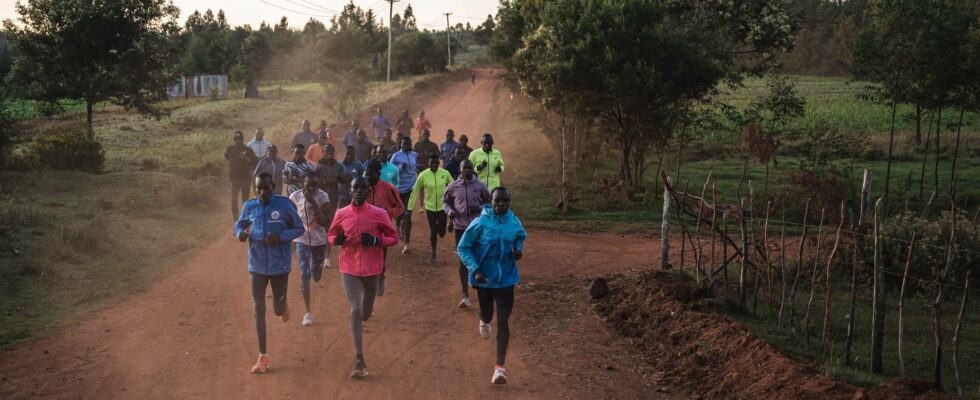The city of Iten seems to live only to the rhythm of the clap-clap on the beaten dirt roads. Aerial strides, rhythmic arm swings, regular breathing. Swarms of runners cross and recross each other every day, sweating profusely as they devour dozens of kilometers. Always with an eye on the watch, an essential tool for monitoring heart rate. Among them, French and European athletes who, this winter, fled the cold of the Old Continent to join Kenyan training camps and fine-tune their preparation for the Paris Olympic Games.
The highland trails of the Rift Valley, where 2,400 metres of altitude stimulate red blood cell production, have become one of the world’s most popular places to train for endurance races, as well as home to many top marathoners and Olympic medallists. “Home of Champions,” proclaims a sign at the entrance to this western city. But can it remain so for much longer?
For several years, the Kenyan athletics federation has been concerned about the effects of climate change on the performance of its athletes, but also on the capacity of certain places to host events. The message was hammered home again by its boss, Jackson Tuwei, also vice-president of World Athletics, in the introduction to the “Rings of Fire” report published in mid-June. “Athletes face increasing challenges from air pollution, food and water insecurity, and lack of shade. And the challenges posed by extreme heat,” he writes, […] are considerable and risk having devastating consequences.”
Staggered workouts
Cut in two by the Equator, Kenya’s champion factory is a region highly exposed to extreme weather events, as the catastrophic and deadly floods of last spring showed. They could profoundly affect training conditions that have been ideal for distance runners. “If young athletes are hungry, they won’t run. If the air quality is bad because there is dust and smoke, they won’t run. If there is no shade because the trees have been cut down and there is no water to drink or shower in, they won’t run,” summarizes Jackson Tuwei to Madeleine Orr, expert in sports ecology and author of Warming up: How Climate Change is Changing Sport (Bloomsbury, 2024, untranslated). “Sometimes I wake up at night and wonder where I’m going to run if all the trees disappear,” confided, three years agoEliud Kipchoge, double Olympic marathon champion, who trains in Kaptagat, not far from Iten.
According to World Bank projectionstemperatures in Kenya are expected to rise by 1.7°C by 2050, and by nearly 3.5°C by the end of the century. But the warming is already forcing athletes to adjust their schedules. “The afternoon run at 4pm, a key part of the double daily training that is so popular among the most decorated runners, is happening later, at 5pm or 6pm,” notes Madeleine Orr.
The number of tropical nights, with temperatures above 20°C, is also expected to increase sharply. Between 210 nights per year – in the “best” scenario – and 230 – the worst – by 2040, compared to 180 in 2020. Enough to disrupt the quality and quantity of sleep of these high-level athletes, a key factor in their recovery. “These disturbances could lead to psychological or concentration problems,” admits Professor Vincent Onywera, from Kenyatta University, who has studied his country’s runners extensively.
Fatigue and injuries
In addition to disrupting agricultural yields or access to water, persistent droughts can also increase the suffering of the body over time. Harder road surfaces make impacts more violent on joints. “We are conducting several studies on these questions,” explains Vincent Onywera. “Climate change will inevitably lead to more injuries due to fatigue and extreme heat, but we must come up with mitigation solutions.”
Kenyan champions won all the Olympic gold medals in the 3,000-meter steeplechase between 1984 and 2016. They have taken control, men and women combined, of 112 of the 196 major marathons organized since 2006. Will they soon be forced to expatriate to maintain their superiority? “Kenya is very resilient,” assures the professor. “And our athletes will prove it in Paris, by winning all the middle and long distance medals.”
.
